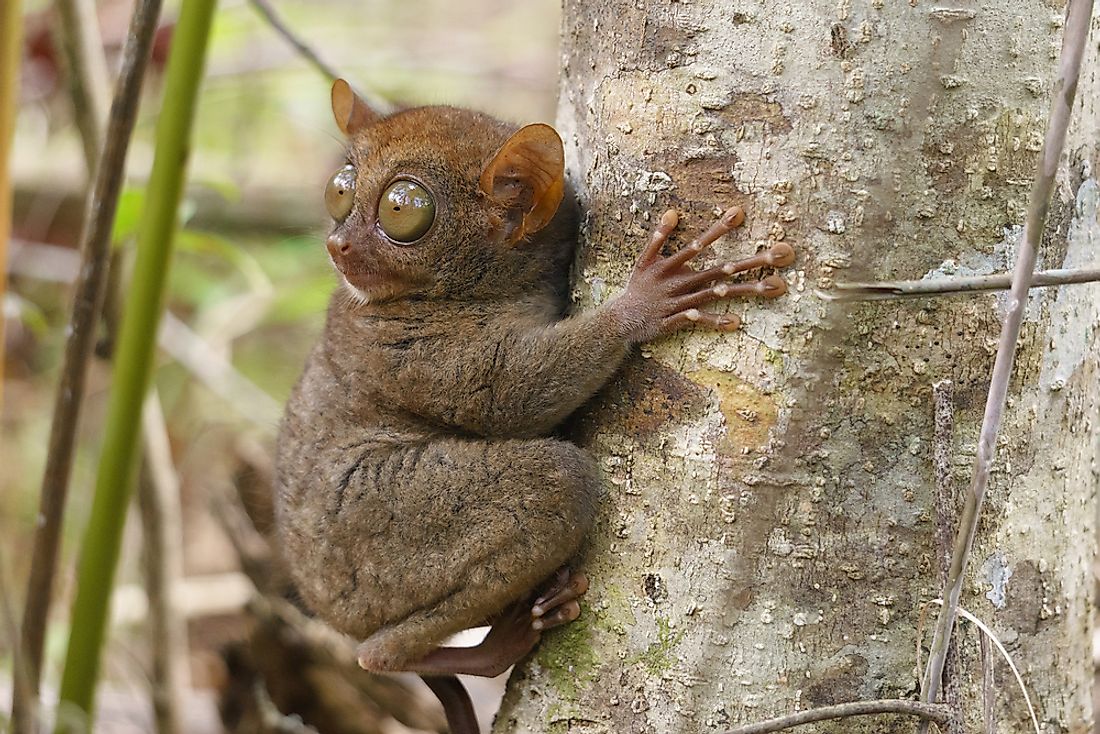Which Mammal Can Rotate Its Head The Farthest?

In the mammal world, many animals have the spinal morphology to rotate their heads on either side. According to the Guinness World Records, the animal that can rotate its head the furthest is the tarsier. The singular spinal structure of the animals allows them to rotate their heads about 180° on either side of the head. This structure, essentially, gives them an almost 360° head rotation. This ability is only beaten by owls who have the highest degree of head rotation of any animal. Owls have the ability and structure to rotate their heads by 400° fully, which translates to half rotation of 200°.
Tarsier
Tarsiers refer to a group of haplorrhine primates belonging to the Tarsiidae family. This family is the only surviving family in the Tarsiiformes infraorder. Today, the distribution of the animals is much less than it was since they exist only in Southeast Asia. The specific countries include Indonesia, Malaysia, and the Philippines. However, fossil records show that the animals used to live in other parts of Asia, North America, Africa, and Europe. These animals are the only extant primates that are entirely carnivorous.
Physical Description
Tarsiers are relatively small animals with large disproportionate eyes that have a diameter of about 0.63 inches. This size of the eyes is close to the size of the brain although in some cases they may be larger than the brain. This unique design of their heads and eyes comes from the need to create a balance between the brain and the eyes while hunting silently. In addition, the animals have long hind limbs, which is mainly due to the lengthy elongated bones of their feet. In fact, the name of the animal comes from the lengthy feet bones. All this enables them for a life full of leaping and vertical climbing. The whole body has a length of between 4 and 6 inches with a tail that has a length ranging from 8 to 10 inches. The hind limbs have a length that is almost twice as long as the full body length of the animal. Most of their elongated fingers have nails although some fingers of the hind legs have claws, which serve the function of grooming. The fur is soft and velvety and comes in a number of colors including beige, ochre, and buff.
Habitat and Behavior
These carnivores feed on a number of animals including lizards, snakes, bats, birds, and insects. On, average, they gestate for around six months. Interestingly, the animals do not breed successfully in captivity. One of the reasons for this is that they have specialized feeding needs.
Tarsiers are nocturnal and have excellent night vision. Some of the species do not strictly follow the definition of nocturnal since some show some activity during the day. As stated earlier, their habitat and structure allow them to have a life of leaping and climbing.
Pygmy tarsiers are different from other tarsiers in a number of things such as morphology, behavior, and communication. However, the most distinguishing factor between pygmy tarsiers and other species is the habitat. Pygmy tarsiers tend to prefer environments that have higher altitudes compared to other species. They were thought to be extinct until their rediscovery in 2008. They are now considered to be one of the world's 25 most endangered primates.











